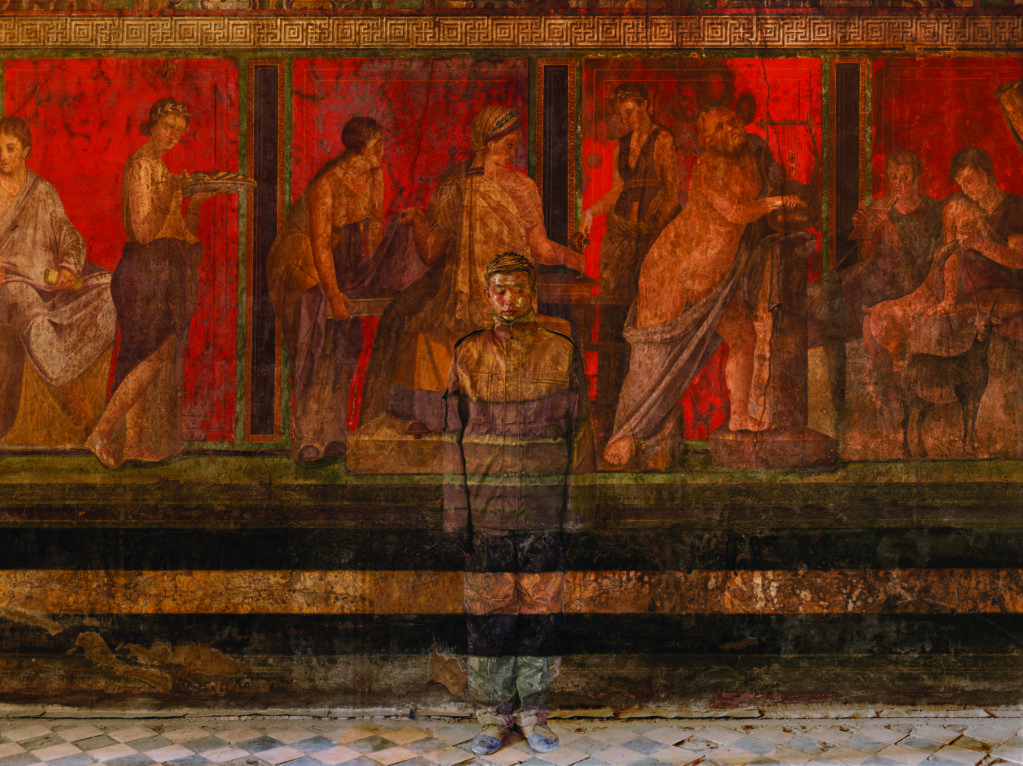Whilst Africa is embracing all things Chinese – trade, infrastructure and ideas, here is a guaranteed conversation-starter for Africans visiting China.
Just ask about Liu Bolin, the ‘invisible’ Chinese artist whose exhibitions are touring the world – and wowing it.
Bolin has perfected the art of urban camouflage, painting himself from head to toe, blending himself into the background he is in so seamlessly that you will not notice him until he moves. The idea is to make a silent statement and prompt the question: what lies beneath our public realms?

Bolin has exhibited his work in some of the world’s biggest galleries, triggering intrigue and introspection.
Loading...
Born in China’s Shandong province, before becoming an artist, Bolin did the odd job as art teacher and assistant. It was not ideal.
“I lived at the bottom of society,” he says. “Those years, I felt redundant.”
That is when he often receded to the background, hiding. In October 2005, the Suojia Village International Art Camp in Beijing was demolished, “forcefully”, he tells us.
That was the starting point of Bolin’s celebrated Hiding In The City series, which began as a brand of ‘performance art’ that he is best known for.
“[The demolition] was a shock for me. I created the Hiding In The City series to express my protest. I try to use the series to express my inner world and my understanding of the world around me,” says Bolin.
The artistic process he uses is trompel’oeil (translated from French as ‘trick the eye’). In his work, there is no touching-up by a computer.
Every effect is painted on to his body, slowly, step by step, using it as a canvas to deliver a social message.
That is why his works are moving; he is the front and center of his art.
The Mandarin-speaking artist shares more details about his fascinating work in this interview:
Why do you do what you do?
Many people understand the meaning of my work and the power it has. My work spreads widely on the internet which indicates people know what I want to express. I think the most important thing [about] art is it [can] connect to people’s inner worlds.
What statement are you making?
When I started the Hiding In The City series, I hid myself in the studio [that had] been demolished. That work represents my protest [against] urban demolition.
Describe the work you have done around the world…
In the beginning, I had done work in France and Italy. I was disappearing in front of graffiti, bookshelves etc. I hid myself in various time [zones], languages, backgrounds and events. I thought different things happening at different times [can influence] the way humans think. At the same time, social problems such as the strikes in Paris, [poverty] in India, the financial crises and crash of the World Trade Center in New York, have all influenced my work.

Which is your most recent work?
I had my solo show in Paris in March, and another solo show at a museum in Argentina in April. I recently did new work in Paris, influenced by the Charlie Hebdo shooting. I found 17 local people in Paris and made them disappear in order to question the problems in society. I thought this the modern version of religious war. I will participate in the Biennale of Performance Art in Argentina in June and also work on a new [art] influenced by transgenic food in Argentina.
How does the government in China view your work?
To be frank, the government has never censored my work so far. My work has never gotten any support from anyone but no one has been against it [either]. I have been doing my work quite freely…A lot of people from around the world like what I do and have resonance with my work. This is what I cherish the most.
How much time does it take to prepare for each work and how much does each ‘performance’ cost?
The time [taken to] paint the body depends on the complexity of the background. Like the Supermarket, Magazine…such work needs a lot of time to grasp details. The longest I have taken is almost four days. Actually, it is really hard work. Generally speaking, for a simple background, a day is enough, especially outdoor scenes.
Actually, standing there, being painted on, is a painful process. For several hours, you cannot move, the body aches all over. However, I enjoy such a process which is a sacrifice to the art and a striving for my [artistic] dream. I have never calculated how much it costs for finishing each performance.
What materials do you work with?
I’ve been using cloth designed for Chinese military men. Because in the beginning, I wanted to imitate how a sniper is hidden from his environment, by painting on his face, hands and body. For the paint, we usually use acrylic as it is simple.
How do you fund your work?
I have galleries who are in charge of the commercial part of my work.
What have you planned for the year ahead?
I will work on a new Target series in Italy and an art performance from the series Security Check. I plan [similar] performances next year in both Paris and New York. I would like to find famous buildings and invite people to be a part of it. Last year, there were many plane accidents. I would like people to pay more attention to matters of flight security.
Do you have any plans to visit Africa?
African culture has always been my fascination. When I was in college, I specifically researched Africa’s traditional art. Unfortunately, I have never been to Africa, but I believe I will have a chance to visit it someday in the future. I really look forward to it.
Loading...
